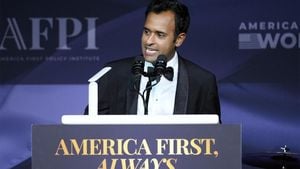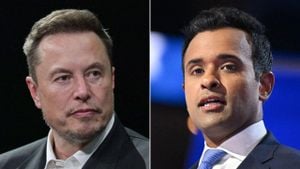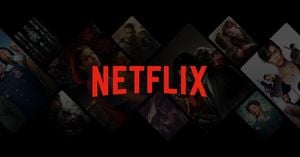The boxing world was buzzing with excitement as the highly anticipated showdown between Mike Tyson and Jake Paul aired on November 15, 2024. Promoted as the event of the year, the fight not only captured the attention of sports fans but also shattered streaming records and created quite the stir with Netflix's live service. Despite the significant hype, the night took unexpected turns for both the fighters and the streaming giant, culminating in widespread technical issues and legal ramifications.
Touted as one of the most significant boxing events, the bout drew tremendous interest, with promotional teasers featuring both fighters engaging fans on social media platforms. Jake Paul, the 27-year-old YouTube star turned boxer, facing off against the seasoned 58-year-old Tyson, sparked curiosity about how the match would play out. Promoters anticipated record viewership, but what transpired exceeded all expectations.
According to reports from Netflix, the fight amassed over 108 million total viewership worldwide, becoming the most-streamed sporting event ever, with peaks of 65 million live concurrent streams. It topped Netflix’s English TV list, reaching number one across 78 countries and entering the top ten of all 91 markets tracked. This massive audience showcased not only the fighters' star power but also the potential of live streaming sports.
Yet, the night was marred for many as technical difficulties plagued the streaming experience. Viewers across the globe faced significant issues, including buffering, glitches, and sometimes complete inability to access the fight. The backlash was immediate and intense. On social media, frustrated fans took to platforms like Twitter to express their anger, with many deeming the experience as “unwatchable.” One Florida resident, Ronald “Blue” Denton, took matters to the legal arena, filing a class-action lawsuit against Netflix, accusing the company of breach of contract and deceptive practices.
Other public figures weighed in as well. Radio personality Howard Stern raised concerns about Netflix's streaming capabilities, emphasizing, "You mess with people’s football, there is hell to pay," following the technical snafus. Netflix's Chief Technology Officer Elizabeth Stone addressed some of these concerns internally, recognizing the impact on viewers. Her communications also pointed out the record-breaking viewership, highlighting the event's contradictions: "We don’t want to dismiss the poor experience of some members, but we still believe this event was a huge success."
This segment of the fight also drew heavy attention on traditional media outlets, creating discussions on various platforms about how streaming is changing the way fans consume sports. Some sports analysts suggested the streaming hiccups signal the need for improvement, especially as Netflix gears up for more live sports events, including anticipated offerings like NFL games and WWE broadcasts.
Meanwhile, the fighters were busy creating their narratives within the ring. Paul secured the victory, winning by unanimous decision after eight rounds. While the fight itself had its slow moments, it sparked debates among fans about the fighters' performances. Some spectators felt Tyson's legendary status overshadowed Paul's social media upbringing, leading to discussions about the future of boxing and entertainment.
The spectacle didn't just stop at streaming records. The fight also generated substantial revenue, with the live gate setting new heights. Taking place at AT&T Stadium, the event garnered $18.1 million, marking it as the biggest gate for boxing events outside Las Vegas, doubling the previously set records. This financial success indicated both fighters’ drawing power and the appetite for high-profile matches.
Meanwhile, the co-main event also made history. The rematch between Katie Taylor and Amanda Serrano drew the largest audience for professional women's sports, averageing 74 million viewers globally and becoming the most-watched event of its kind. Taylor’s victory had fans buzzing about the advancement of women’s sports, as they showcased their skills on this monumental platform.
Despite the technical challenges, the event's unprecedented popularity has opened new conversations about the nature of live sports broadcasting. While Netflix plans to continue venturing more extensively under the live sports umbrella, the realities of streaming challenges weigh heavily on their path forward.
Viewers eagerly await updates on how Netflix will handle the upcoming events, striving to regain viewers' trust after the debacle of this high-profile match. Denton's lawsuit is set to face the scrutiny of court proceedings, which could potentially lead to major repercussions for the streaming giant as it navigates the complications of live sports streaming.
The fight between Mike Tyson and Jake Paul was not just about boxing; it represented the intersection of traditional sports and modern media consumption. While fans around the world tuned in for the spectacle, many were left with frustrations over the glitches and buffering. The event encapsulated the thrill of boxing but also reflected the growing pains accompanying the streaming revolution. The ultimate question remains — can streaming services like Netflix provide the reliable performance needed to match the excitement of live sports?
Whatever the outcome, one thing is clear: the Tyson vs. Paul fight etched itself not just as another boxing match, but as a significant chapter in the evolution of media, sports, and entertainment.



